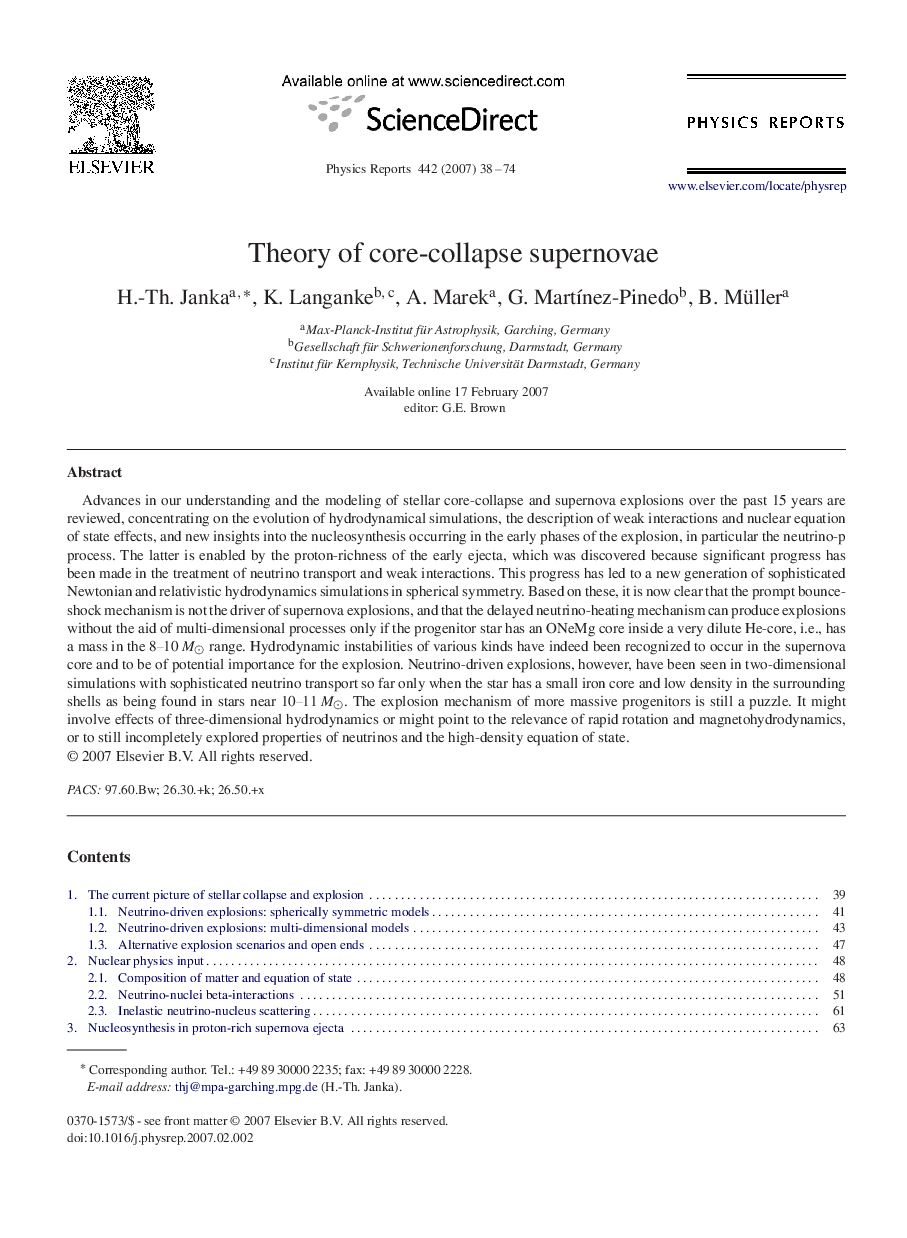| Article ID | Journal | Published Year | Pages | File Type |
|---|---|---|---|---|
| 1873670 | Physics Reports | 2007 | 37 Pages |
Advances in our understanding and the modeling of stellar core-collapse and supernova explosions over the past 15 years are reviewed, concentrating on the evolution of hydrodynamical simulations, the description of weak interactions and nuclear equation of state effects, and new insights into the nucleosynthesis occurring in the early phases of the explosion, in particular the neutrino-p process. The latter is enabled by the proton-richness of the early ejecta, which was discovered because significant progress has been made in the treatment of neutrino transport and weak interactions. This progress has led to a new generation of sophisticated Newtonian and relativistic hydrodynamics simulations in spherical symmetry. Based on these, it is now clear that the prompt bounce-shock mechanism is not the driver of supernova explosions, and that the delayed neutrino-heating mechanism can produce explosions without the aid of multi-dimensional processes only if the progenitor star has an ONeMg core inside a very dilute He-core, i.e., has a mass in the 8–10M⊙ range. Hydrodynamic instabilities of various kinds have indeed been recognized to occur in the supernova core and to be of potential importance for the explosion. Neutrino-driven explosions, however, have been seen in two-dimensional simulations with sophisticated neutrino transport so far only when the star has a small iron core and low density in the surrounding shells as being found in stars near 10–11M⊙. The explosion mechanism of more massive progenitors is still a puzzle. It might involve effects of three-dimensional hydrodynamics or might point to the relevance of rapid rotation and magnetohydrodynamics, or to still incompletely explored properties of neutrinos and the high-density equation of state.
